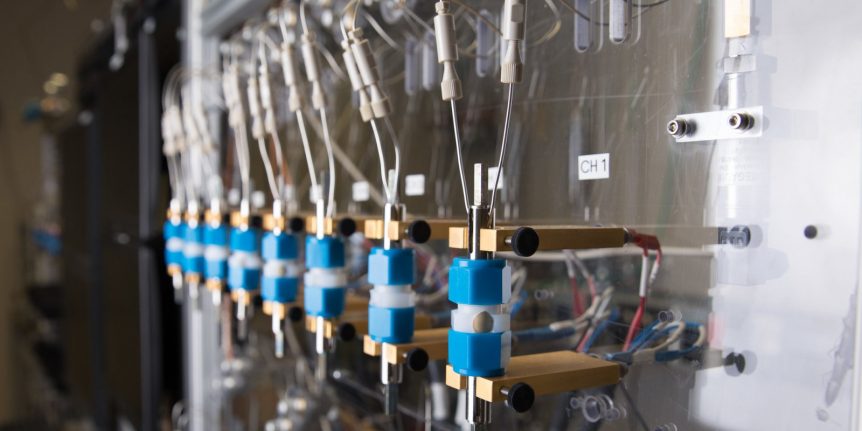Dr. Jangwoo Kim has a resume’ that puts a great many qualifications together that spell “battery designer.” He has a B.S. degree in chemical engineering from Yonsei University, one of three “Sky Universities” regarded as South Korea’s most prestigious. At Cornell University, he received M. S. and Ph.D degrees in chemical engineering, and then worked for LG Chem on lithium-ion battery pack design. After that, he returned to Cornell to work on his Ph.D, investigating “next-generation rechargeable battery technology, including Li-Air and Li-Sulfur, specialized in inorganic nanomaterial synthesis and polymer processing via an electrospraying method.” He joined IBM Research, Almaden Research Center in 2016 and participated in the Battery 500 project, aiming to build a battery pack with a specific energy of 500 watt-hours per kilogram. We see the project leader, Dr. Winfred Wilcke, in a short video about that project. Battery 500 intended to reduce or eliminate heavy metals such as cobalt from the cells. Cobalt is not rare, but …
Suppressing Those Pesky Dendrites
Dendrites in the human body are tree-branch-like protuberances that help transmit synapses, defined as tiny transmitters and receivers for chemical messages between the cells. In this setting they are beneficial and necessary for brain and nervous system development. In batteries, however, such protuberances send mixed and negative messages that short out connections between the components of the host battery. This is a serious enough issue that it’s kept lithium-metal batteries from serious development, dendrites growing between dissimilar metals being a malady of such cells, and even causing fires that make lithium batteries a bit fearsome. The blog has reported on efforts by Berkeley Lab researchers to reduce dendrite growth. To enable visualization of these growths, Clare Grey, a professor of chemistry at Cambridge University, teamed up with NYU chemist Alexej Jerschow to develop a way of imaging batteries through magnetic resonance imaging (MRI). As Popular Mechanics explained in 2012, “These moss-like crystalline growths, called dendrites, are the bane of battery builders. …
Competition Heats Up in Lithium-Sulfur Batteries
Founded in October 2010, NOHMs Technologies has developed a battery based on lithium-sulfur chemistry. In April 2013, the company was awarded a $500,000 Phase II SBIR Award from the National Science Foundation (NSF) to scale a novel low-cost manufacturing process for long-life sulfur cathode composite materials. NOHMs (Nano Organic Hybrid Materials) will locate to and use facilities at the Kentucky-Argonne Battery Manufacturing Research and Development Center and the University of Kentucky’s Spindletop Administration Building. NOHMs is developing electrode, electrolyte, and separator products as a 3-part solution for high-energy, low-cost, long-life, and safe batteries. NOHMs says its composite sulfur electrodes—carbon nanoparticles infused with sulfur developed at Cornell – can deliver a specific capacity of 550 mAh/g for hundreds of cycles. Next-generation cathode materials being developed will exceed 800 mAh/g, according to the company. The company claims a class of novel, non-flammable electrolytes that yield >99.9-percent Coulombic efficiency (CE) with high ionic conductivity and high thermal stability. Most researchers rarely mention battery separators, …

